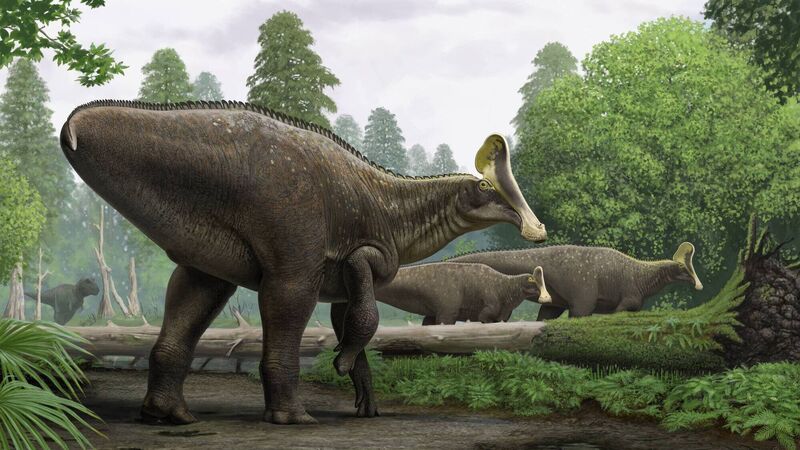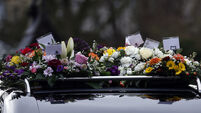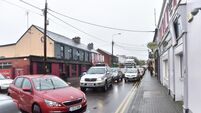Bone from the wrist of a 68m-year-old Russian dinosaur discovered

A palaeoartist's reconstruction painting of the injured dinosaur
A bone from the wrist of a 68m-year-old Russian dinosaur has been discovered by researchers from Queen’s University Belfast.
The bone shows the dinosaur had broken its wrist, with the information gathered from the study being hailed as "exceptional".
The bone was found in a local quarry of the city of Blagoveshchensk, in far eastern Russia, by a team of experts, led by palaeontologist Dr Filippo Bertozzo.
For palaeontologists, the discovery of dinosaur bones with an injury can be expected, and fossilised fractures or breaks can provide information on the resilience and ability of dinosaurs to survive traumatic events. Bone fractures are the most common type of injuries preserved in the dinosaur fossil record.
The bone is from an Amurosaurus, a four-legged dinosaur with a duckbill snout that would have been about 6m long.
By analysing the bone, it was found that injury, which was likely caused by searching for food in rough terrain, did not cause the dinosaur to die immediately.
“After detailed examination of the broken bone, we have discovered that it was from the wrist of a dinosaur known as a hadrosaur Amurosaurus riabinini and that the accident most likely happened when the four-footed animal was running or jumping, possibly whilst roaming the land in search of food or water,” explained Dr Bertozzo.
The study states the dinosaur's wrist would have suffered from a continuous weight-bearing pressure that placed stress upon the fracture site, likely leading to a limp.
“Against all the odds the dinosaur survived the accident as we can see that the bone was actually beginning to heal — this suggests that it didn’t die immediately. However, it is likely that the injury led the animal to limp on three limbs, affecting its chances of escaping from predators,” Dr Bertozzo added.
Dr Alastair Ruffell, from the School of Natural and Built Environment at Queen’s, said: “For Filippo to work on this specimen from Russia in such detail, and find out so much from its injury, is pretty exceptional.”
Dr Bertozzo carried out the research during his PhD in Queen’s and his supervisor — Professor Eileen Murphy, deputy head of the School of Natural and Built Environment at Queen’s — said studies like this one could help inform about about the lives of past individuals.
“This study has enabled us to learn more about the experience of an injured animal in the period leading up to its death; it serves to remind us that even majestic dinosaurs could have accidents.”
Dr Bertozzo is now based at the Royal Belgian Institute of Natural Science in Brussels. The full research findings have been published in .










